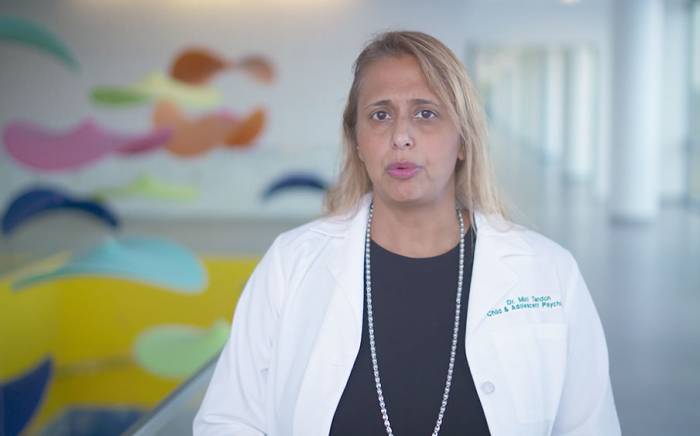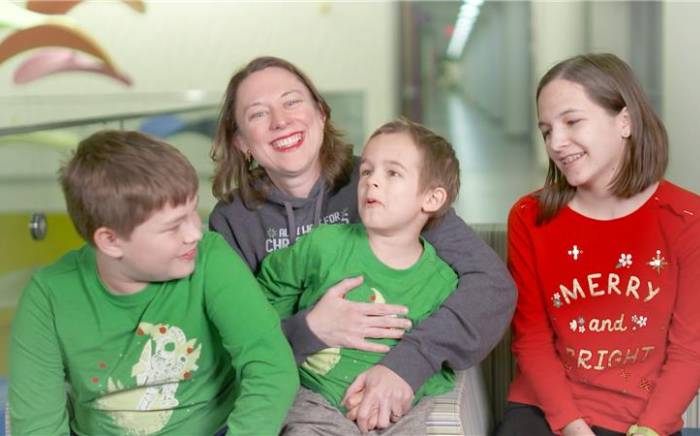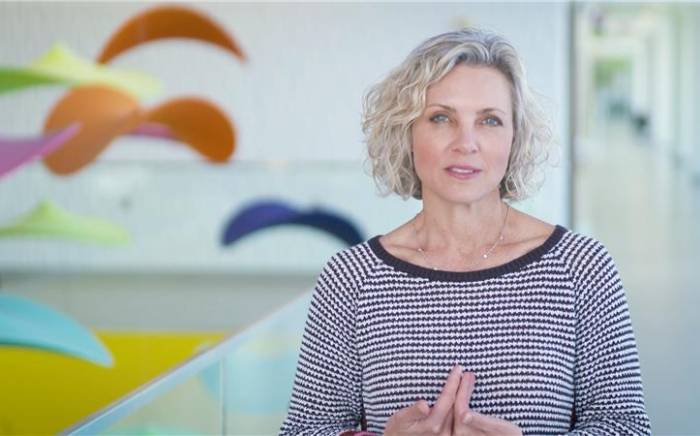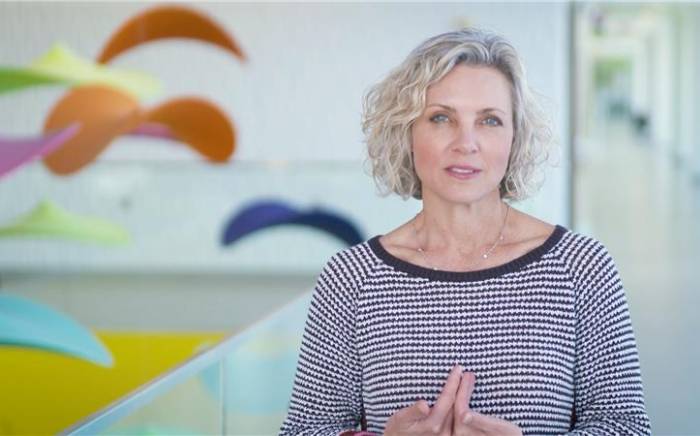Call it a mother's intuition. Christine knew something was wrong with her baby Cory's left eye from the day he was born. "He just didn't seem to be using it as much as his right eye," she says.
When Cory was 4 months old, her suspicions were confirmed in his pediatrician's office. A red reflex test alerted the doctor to a problem. Cory's left eye was not reflecting the same amount of light as the right. The doctor referred Cory to the St. Louis Children's Hospital Eye Center, where ophthalmologists under the direction of Lawrence Tychsen, MD, diagnose and treat eye problems using rapidly advancing technology.
Understanding What Babies See
Dr. Tychsen and his colleagues can find out precisely what babies can see even before the babies can tell them. At the eye center's Visual Diagnostics Lab, babies sit on their mothers' laps and look at a television screen that displays calibrated patterns of different contours and sizes. Electrodes attached to the infant's scalp detect activity in the visual part of the brain as nerve cells react to the patterns. By varying the size of the patterns, technicians can reach a threshold beyond which the infant's brain won't see the patterns and then equate that to results they would get from a letter chart an older child would read.
The testing confirmed that the amblyopia (also called lazy eye) in Cory's left eye was due to a cataract, which is a congenital cloudiness in the lens of the eye. The lens in the middle of the eye is similar to the lens in a camera. It focuses an image onto the retina the same way a camera lens focuses an image on a film plane. If the lens is clouded by a cataract, light will scatter or defocus, and the retina will never see a clear image. Consequently, the brain will not receive the sharp images it needs for the nerve cells to grow and see clearly. Severely cloudy cataracts that occur near the time of birth must be removed early or vision will fail to develop, and the eye will become legally blind. Worldwide, cataracts are a major cause of treatable blindness in newborn and older children, particularly in developing countries. This makes early nonverbal testing all the more important.
If Cory had been born a few years earlier, Dr. Tychsen would have had two treatment options: thick glasses that magnify the eyes or expensive contact lenses that can be easily torn or lost and must be inserted, removed and cleaned daily. When dealing with children under 1 year old, neither option was very appealing.
A New Lens for Cory
But Cory was born at a time of innovation in pediatric eye surgery. Today, because Dr. Tychsen has new instrumentation and techniques at his disposal, he can surgically remove the cataract and implant a permanent, plastic lens into the eye for focusing.
"Up until about three years ago, it would have been too risky to implant intraocular lenses in infants," Dr. Tychsen says. "We just didn't have the technological advances or the type of lenses to do it." Dr. Tychsen now removes cataracts with a combination cutter and vacuum — a tool of stainless steel no thicker than a toothpick. It is inserted through a tiny hole that is made in the wall of the eye using a microscope. A second hole allows fresh fluid to be flushed into the eye. With the new instrument, Dr. Tychsen cuts the cataract into pieces and vacuums it away. In young children it is usually necessary to remove the thick gel that fills the middle of the eye. Removing the gel reduces the chance that scarring will occur within the eye, causing a cataract membrane to redevelop. Dr. Tychsen fills the space created from removal of the cataract and gel with a special fluid inserted in the eye.
He then inserts the plastic lens to focus the eye. Today, Dr. Tychsen and his partner, Gregg Lueder, MD, SLCH pediatric ophthalmologist, have soft, flexible and highly compatible lenses to choose from. New foldable intraocular lenses allow smaller and less invasive incisions. The power of the implant selected depends on the size of the eye and calculated estimates of future eye growth.
Cory's implant focuses at distant targets. He will wear bifocal glasses to fine-tune his focusing for objects up close. The prognosis for normal adult vision is good. But for now, Cory wears a patch over the normal eye part of the day to aid development of the operated eye.
Within hours after his outpatient cataract surgery, Cory was laughing and playing. "He is a very happy little boy," says Christine. "There doesn't seem to be any delay in his development at all."
The Art and Science of Eye Repair
The poster of a cross-eyed Mona Lisa hanging in the St. Louis Children's Hospital Eye Center may not be what Leonardo Da Vinci had in mind. But Da Vinci would have been delighted with the innovative thinking and creative diagnostic and treatment advances put into practice by the doctors there.
Dr. Tychsen and Dr. Lueder point to their work with children who have complex brain disorders as examples of how they can give hope to parents where few other centers can. "Some eye specialists may get frustrated that they can't get children with developmental delays to respond to testing," Dr. Tychsen says. "With new electronic technology in our vision laboratory, we can usually diagnose their problems and improve their eye sight. Since vision is such an important avenue for learning, we can often improve their ability to process information and communicate."
The Children's Eye Center also is investigating how to better treat children with excessive degrees of near- or far-sightedness that lead to severe amblyopia (lazy vision).
"St. Louis Children's Hospital and the Washington University School of Medicine are the right places to research ways of making laser eye surgery possible for children. We have that technology, the animal models and the combined expertise to make thick, heavy glasses obsolete in the years ahead."







